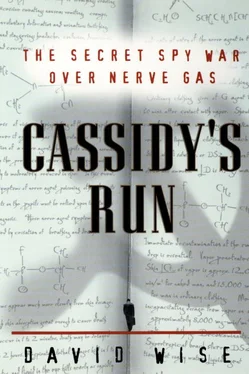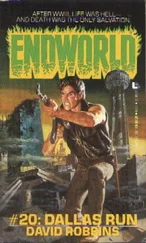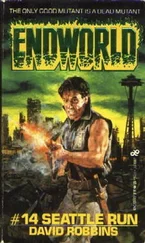The GRU had all but dropped him, but the FBI had one more mission in mind for IXORA.
CHAPTER: 20
MOSCOW: A DEADLY SECRET
They came forVil Mirzayanov early on the morning of October 22, 1992.
At 7:30 A.M., the agents from the successor to the KGB’s internalsecurity arm closed in on his fourth-floor apartment at 14 Ulitsa Stalevarov in Moscow. The two-room flat was not far from the nerve-gas laboratory where he had worked, at the State Scientific Research Institute on the Shosse Entuziastov.
Mirzayanov let the men in only after they threatened to break down the door. His sons, Iskandar, twelve, and Sultan, four, were too young really to understand, but his wife, Nuria, a thin, dark-haired poetess, understood all too well. The Soviet Union had collapsed almost ten months before, but some things, including the dreaded knock on the door by the secret police, did not appear to have changed.
They arrested Mirzayanov and took him to Moscow’s infamous Lefortovo Prison, where the interrogations began. A short, bespectacled man, whose mild exterior masked a tough, inner strength, Mirzayanov was a fifty-seven-year-old physical chemist who had worked in the top-secret Soviet nerve-gas program for almost three decades. As a senior researcher, he had been involved directly in the development in Moscow of the nerve gases that were tested and produced in the plants and military sites along the Volga basin. His specialty was mass spectrometry.
In October 1993, Mirzayanov, although no longer in prison, was awaiting trial on charges of having revealed state secrets. If convicted, he faced a sentence of up to eight years. He was taking an additional risk by agreeing to a series of interviews with the author, in which he talked in detail about Russia’s chemical weapons and the history of its nerve-gas program.
In the late 1970s, Mirzayanov said, he began to have pangs of conscience. “It occurred to me I was engaged in a criminal enterprise. I had participated in the development of weapons of mass destruction. When I came to this conclusion, my work in the research institute became a struggle with myself.” Although he had harbored these misgivings for years, it was not until Mikhail Gorbachev came to power in 1985 and relaxed some of the authoritarian controls of the Soviet state that he felt he could speak out.
“It was only during perestroika that I could share my views with other people. My wife knew, of course, but if I spoke to anyone else, the KGB might hear. So it was inside myself. I felt I was a member of a criminal gang and I didn’t want to do this.” Then in October 1991, Mirzayanov boldly went public in Kuranty, a Moscow daily.
In his brief but extraordinary article, Mirzayanov said not much had really changed; the KGB still controlled people in defense installations, telephones were bugged, dissenters destroyed or fired. “My own secret research institute in the center of Moscow has been poisoning people for decades by its harmful emissions,” he wrote.
Even as the nations of the world were completing work on a treaty banning chemical weapons, the article continued, Viktor Petronin, the institute’s chief, told his staff that “capitalism did not change, we have the same potential enemy, and that our civic duty is to consolidate the country’s defense power.”
Then, obliquely, and with no details, Mirzayanov dropped his bombshell: “The development of a novel chemical weapon was in full swing, the agent was tested on an open range in the most environmentally dangerous area.” He added, “So the question is, why are they trying to deceive the West?”
Amazingly, there was no public reaction by the Soviet government. But in January 1992, only days after the collapse of the Communist state, Mirzayanov was fired by the research institute. His older son, not understanding, taunted him. Why didn’t he go to work like other people? Their income cut off, the family was barely able to scrape by. Mirzayanov had a small pension, and his wife earned a little from writing. A Norwegian humanitarian organization contributed forty dollars a month, and the Carvallo Foundation in Cambridge, Massachusetts, gave him a modest grant in recognition of his moral courage.
Perhaps his background explains Mirzayanov’s willingness to take on the establishment at the cost of his career. He was a Tatar, a Turkic-speaking, mostly Muslim minority that historically has had troubled relations with Russia. In the thirteenth century, the Tatars mixed with the Mongol forces of Genghis Khan, and their very name became synonymous with the invading hordes. Mirzayanov grew up on the European side of the Ural Mountains and moved to Moscow as a young man. He studied chemistry and began work in the nerve gas program when he was thirty.
A month before his arrest, Mirzayanov and Lev Fedorov, a physical chemist, courageously coauthored a revealing article in Moscow News that elaborated on what Mirzayanov had hinted at a year earlier. As far back as 1987, the Soviet Union claimed to have halted all production of nerve gas, they wrote. But Soviet scientists, they continued, had developed in binary form the world’s most powerful nerve gas, which Mirzayanov later identified as Novichok, or “newcomer.”
Mirzayanov knew a great deal about the super nerve gas; his last job had been to measure air and soil samples around the research laboratory to see whether enough chemicals had escaped to enable the CIA or other foreign intelligence services to detect the presence of the new gas.
In the Moscow interviews with the author, Mirzayanov said that Novichok was“eight, may be ten times more toxic”than any nerve gas in the U.S. arsenal. Russia’s total stockpile of nerve gases, which the government had officially declared at forty thousand metric tons—the world’s largest—could cause devastation equal to that of a major nuclear attack. “Tens of millions could be killed by the entire inventory,”he said.
Although he estimated that “probably less than a thousand tons” of Novichok had been produced, “theoretically several hundred thousand people could be killed” by even that amount of the deadly new gas, “if people have no protection and are out in the open. Even if they only breathe fumes they may not die but there could be terrible consequences. Nerve gas can cause mutations in the next generation and in future generations after that.”
According to Mirzayanov, the super nerve gas was developed in 1973 by Pyotr Petrovich Kirpichev, a Soviet scientist at the research institute’s branch at Shikhany, near Volsk. “The binary form was developed in Moscow, the substance itself was done in Shikhany,” he said. Two years later, Kirpichev was joined in his research by Vladimir Uglev, who helped to perfect Novichok.
“Uglev claims the binary form of the gas can be produced in a garage,” Mirzayanov said. “He exaggerates a little, but it is basically true.”
Some of Novichok’s properties cannot be measured, Mirzayanov said, at least by anyone who wants to live to tell about it. “In pure form the binary gas is colorless, and since it is lethal you would not want to taste or smell it.” Was Novichok odorless? Mirzayanov was asked. “If you smell it you’re dead,” he replied, “so no one knows if it smells. It is basically invisible.”
The effect of Novichok on humans was described chillingly by one victim, Andrei Zheleznyakov, a Soviet scientist exposed to only a residue of the gas in an accident in the spring of 1987 in the same Moscow laboratory where Mirzayanov worked. The two scientists were friends.
Zheleznyakov was a member of a select and secret group that tested Novichok at the institute. His job was to blend two components of the nerve gas and measure the temperature of the end product. The higher the temperature during the blending process, the more toxic the nerve gas. The test equipment was housed inside a fume cabinet to protect the scientists working outside it.
Читать дальше












